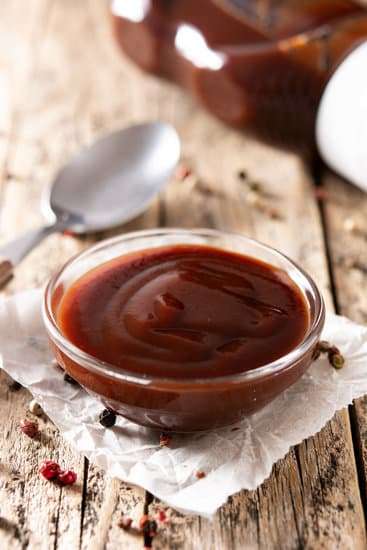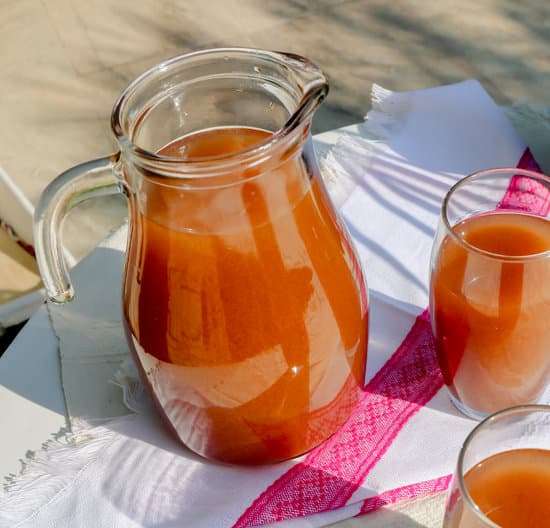Caribbean Pineapple Pepper Sauce Recipe
Pineapple pepper sauce is one of my favorite sauces.
This unique, zesty condiment combines the sweet tanginess of pineapple with the fiery kick of hot peppers to create a versatile sauce that can elevate any dish.
Thus, if you want to add heat to your grilled meats, jazz up a salad, or dip your chips, this sauce will quickly become a pantry favorite.
In this post, we’ll explore everything you need to know about pineapple pepper sauce.
What is Pineapple Pepper Sauce?

Caribbean Pineapple Pepper Sauce has ripe pineapples, hot peppers, and other fresh ingredients like garlic and shandon beni.
The sweetness from the pineapple and heat from the peppers creates a unique, well-balanced flavor profile.
Traditionally, Caribbean households use this sauce to add flavor to their meals. It’s perfect for marinating meats, adding a kick to seafood dishes, or drizzling over grilled vegetables.
The sauce is chunky yet pourable, making it versatile enough for dipping or spreading.
How to Store Pineapple Pepper Sauce
Room Temperature Storage: After making the sauce, it can be stored outside the fridge for 30 to 60 days. This allows the flavors to deepen over time. However, shelf life depends on the climate. Warmer, more humid climates may reduce this time frame.
Refrigeration: For longer storage, keep the sauce in an airtight glass jar in the refrigerator. Once refrigerated, it can last for several months. The vinegar and lemon juice act as natural preservatives, but always check for any changes in color or smell before using it.
Freezing: If you want to make a large batch, freezing is an option. Pour the sauce into freezer-safe containers or ice cube trays for easy portioning. Thaw it in the refrigerator overnight before.
Substitutions for Pineapple Pepper Sauce
- Pineapple: If you don’t have fresh pineapple on hand, you can use canned pineapple chunks (make sure they are in juice, not syrup) or even mangoes for a different fruity twist.
- Culantro (Shandon Beni): If you can’t find culantro, substitute it with cilantro. Culantro has a more potent flavor, but cilantro will still bring a fresh, herbaceous taste.
- Hot Peppers: You can use hot peppers like Scotch bonnets, habaneros, or even milder ones like jalapeños. Adjust the heat level by removing the seeds and white veins inside the peppers if you prefer a milder sauce.
- Pimento Peppers: These are sweet, mild peppers, but if you don’t have them, you can use red bell peppers for a similar color and a subtle sweetness.
Caribbean Pineapple Pepper Sauce Recipe
Here’s a simple, step-by-step guide to making your own Caribbean Pineapple Pepper Sauce at home.
Ingredients:
- 1-2 ripe pineapples (peeled and cubed, yielding 3-4 cups)
- 10 cloves garlic (peeled)
- A few leaves of shandon beni (culantro) to taste
- 10-12 hot peppers (mix of your choice, seeds, and veins removed for less heat)
- 1 carrot
- 2 lemons, juiced (about 1/4 cup)
- 1/3 cup vinegar (add more for desired consistency)
- Salt to taste

Instructions:
Prep Ingredients: Start by thoroughly washing the peppers and shandon beni. Peel and cube the pineapple, and squeeze the lemons to get fresh juice. Toast/grill the pineapples for 5 mins on each side.
Blend: Add all the ingredients into a food processor or blender. Blend until you achieve your desired consistency. For a chunky texture, pulse the mixture a few times rather than blending it into a smooth paste.
Adjust Seasoning: Taste the sauce and adjust with more salt or vinegar if needed. The vinegar not only enhances the tanginess but helps preserve the sauce.
Bottle and Store: Transfer the sauce into sterilized glass jars. Store at room temperature for up to 60 days to let the flavors develop. After that, keep it refrigerated.

Tips for Using Pineapple Pepper Sauce
- Marinades: Use this sauce as a marinade for chicken, pork, or fish. It tenderizes the meat while infusing it with flavor.
- Topping: Drizzle it over tacos, rice bowls, or roasted vegetables for an extra kick.
- Dips: Serve it with chips, fried plantains, or empanadas for a spicy-sweet dipping sauce.
- Salad Dressing: Mix a spoonful of the sauce with olive oil for a quick and tangy salad dressing.
Caribbean Pineapple Pepper Sauce is a delightful way to add flavor to your meals. Its perfect balance of sweetness and heat.
More Pepper Sauce recipes
Caribbean Pineapple Pepper Sauce Recipe
Course: SauceCuisine: CaribbeanDifficulty: Easy12
servings20
minutes10
minutes15
kcalCaribbean Pineapple Pepper Sauce has ripe pineapples, hot peppers, and other fresh ingredients like garlic, cilantro and (also known as shandon beni).
Ingredients
1-2 ripe pineapples (peeled and cubed, yielding 3-4 cups)
10 cloves garlic (peeled)
A few leaves of shandon beni (culantro) to taste
10-12 hot peppers (mix of your choice, seeds, and veins removed for less heat)
1 carrot
2 lemons, juiced (about 1/4 cup)
1/3 cup vinegar (add more for desired consistency)
Salt to taste
Directions
- Prep Ingredients: Start by thoroughly washing the peppers and shandon beni. Peel and cube the pineapple, and squeeze the lemons to get fresh juice. Toast/grill the pineapples for 5 mins on each side.
- Blend: Add all the ingredients into a food processor or blender. Blend until you achieve your desired consistency. For a chunky texture, pulse the mixture a few times rather than blending it into a smooth paste.
- Adjust Seasoning: Taste the sauce and adjust with more salt or vinegar if needed. The vinegar not only enhances the tanginess but helps preserve the sauce.
- Bottle and Store: Transfer the sauce into sterilized glass jars. Store at room temperature for up to 60 days to let the flavors develop. After that, keep it refrigerated.
Notes
- Nutritional Information (per serving, approximately 1 tablespoon):
Calories: 15 kcal
Carbohydrates: 4g
Sugar: 3g
Fat: 0g
Protein: 0g
Sodium: Varies based on salt added
Fiber: 0.5g








